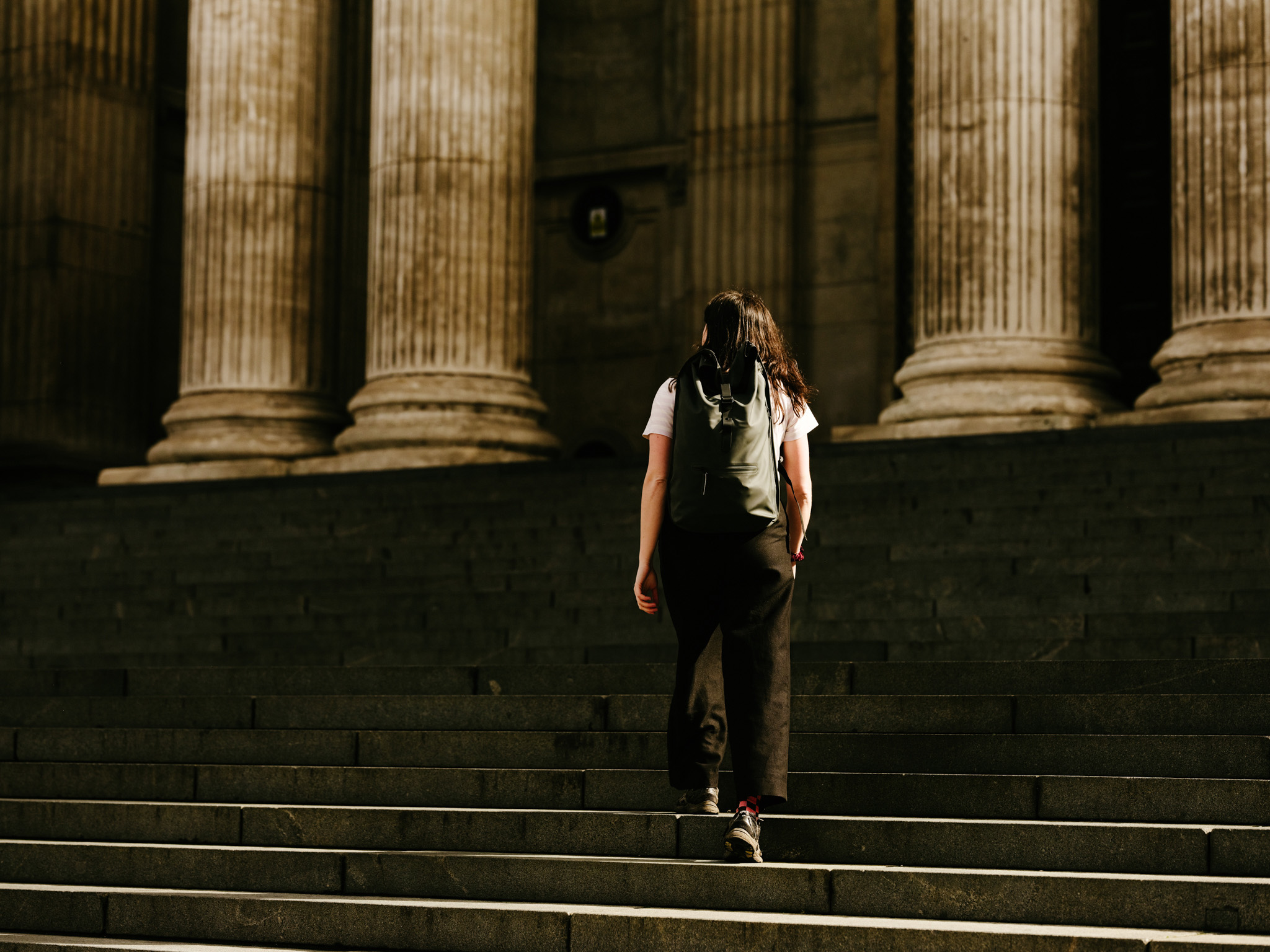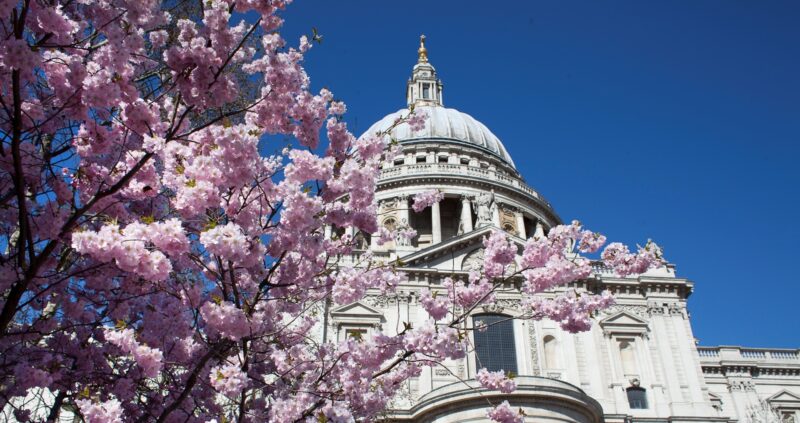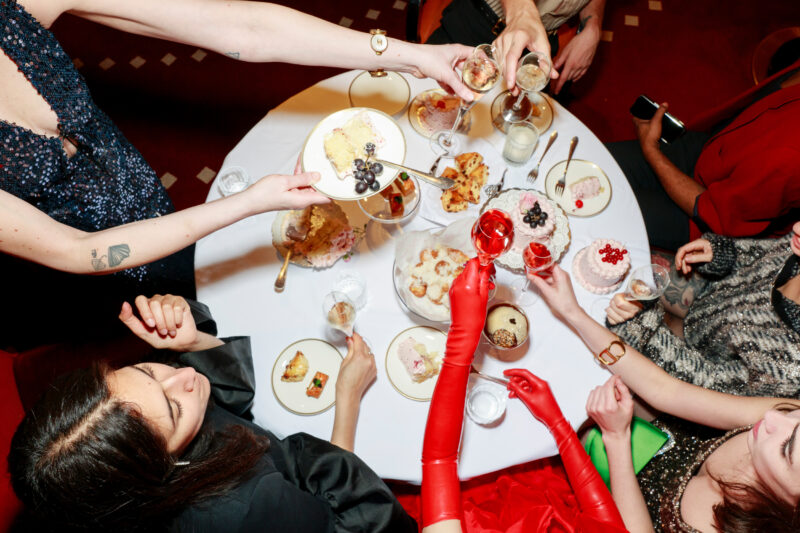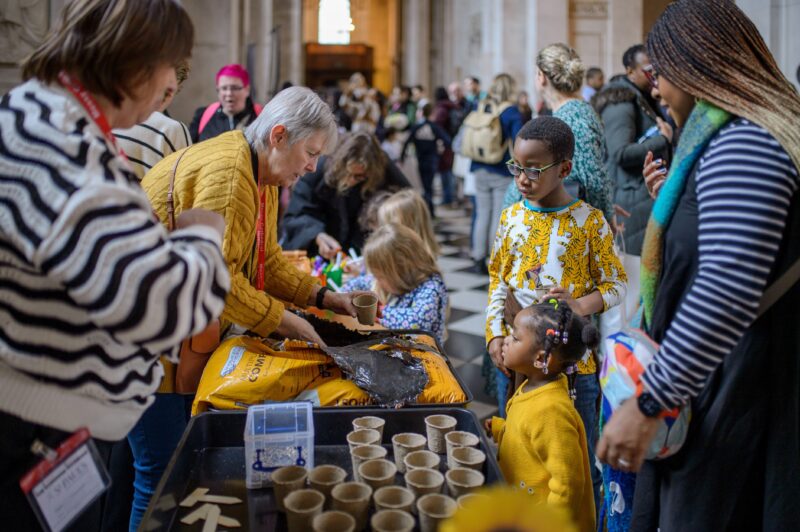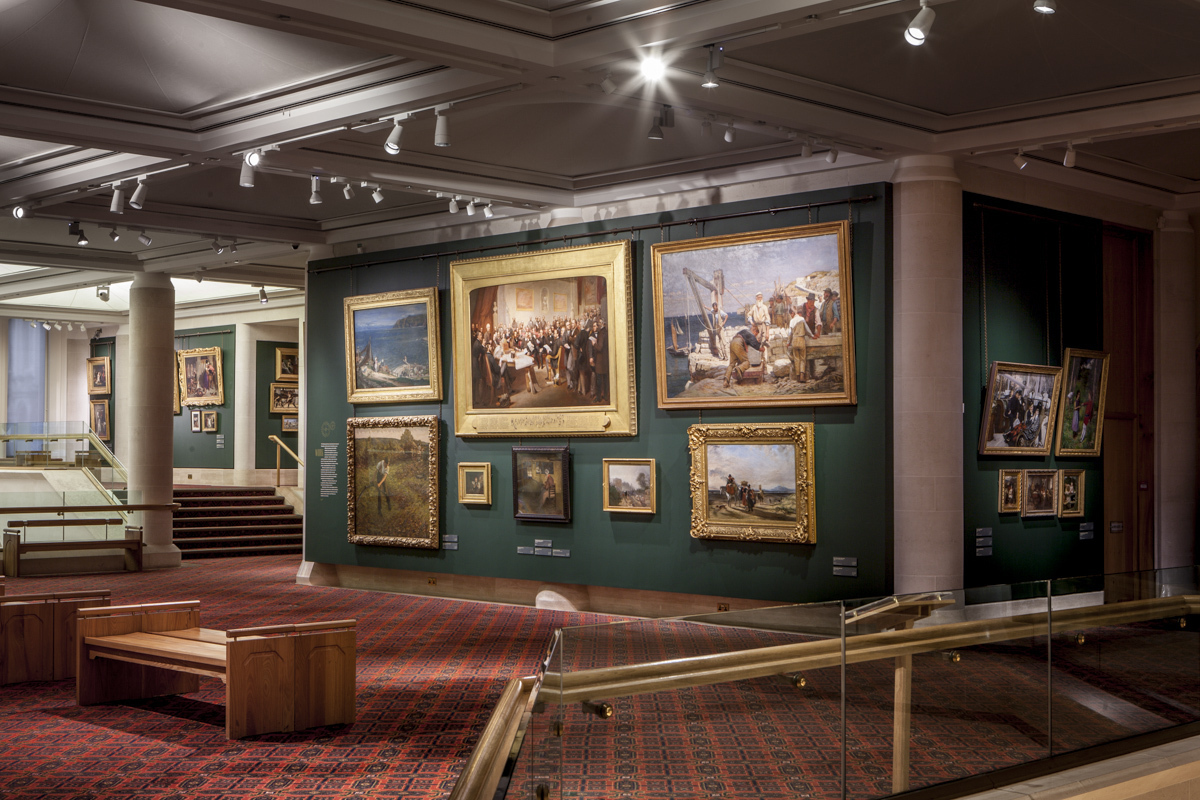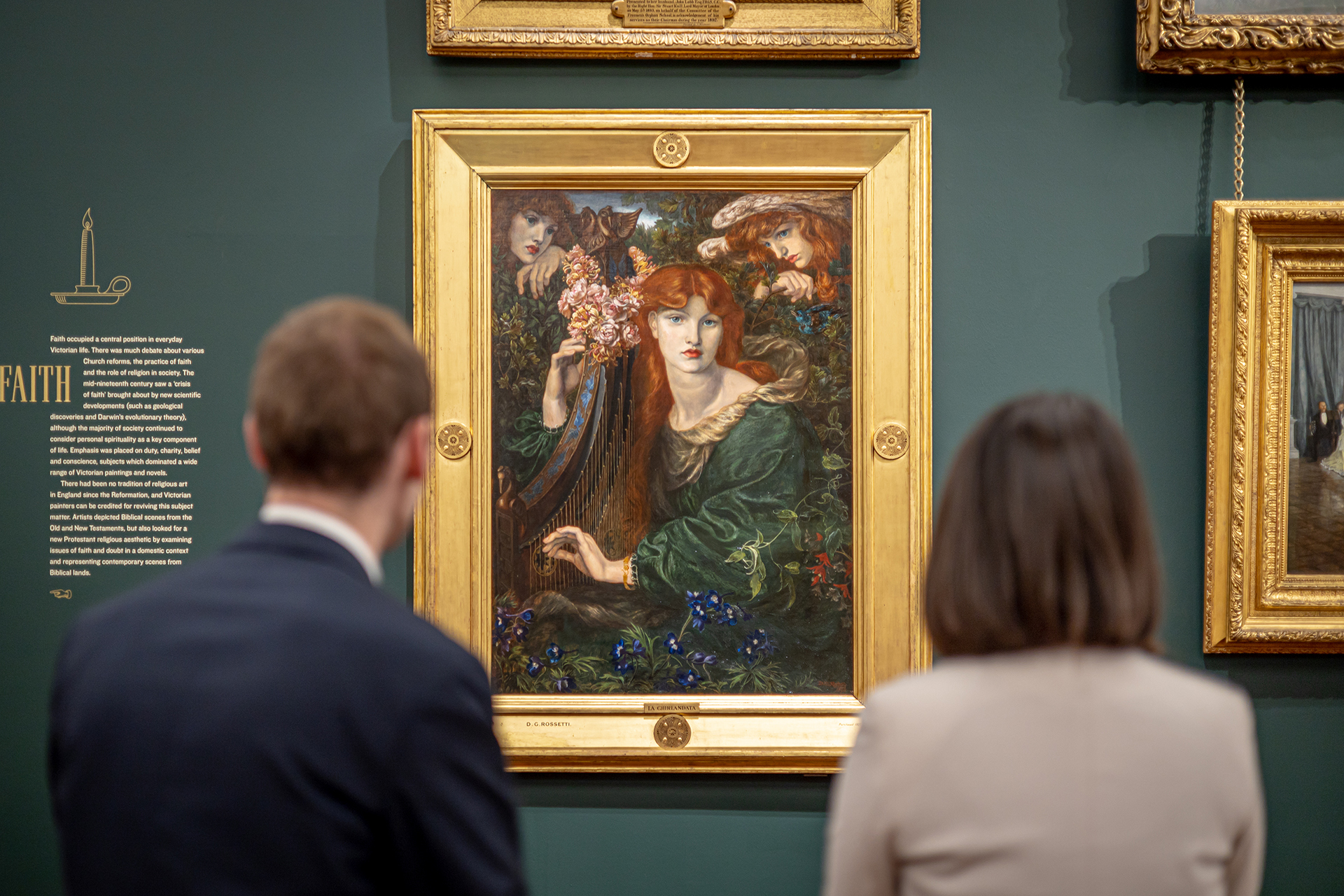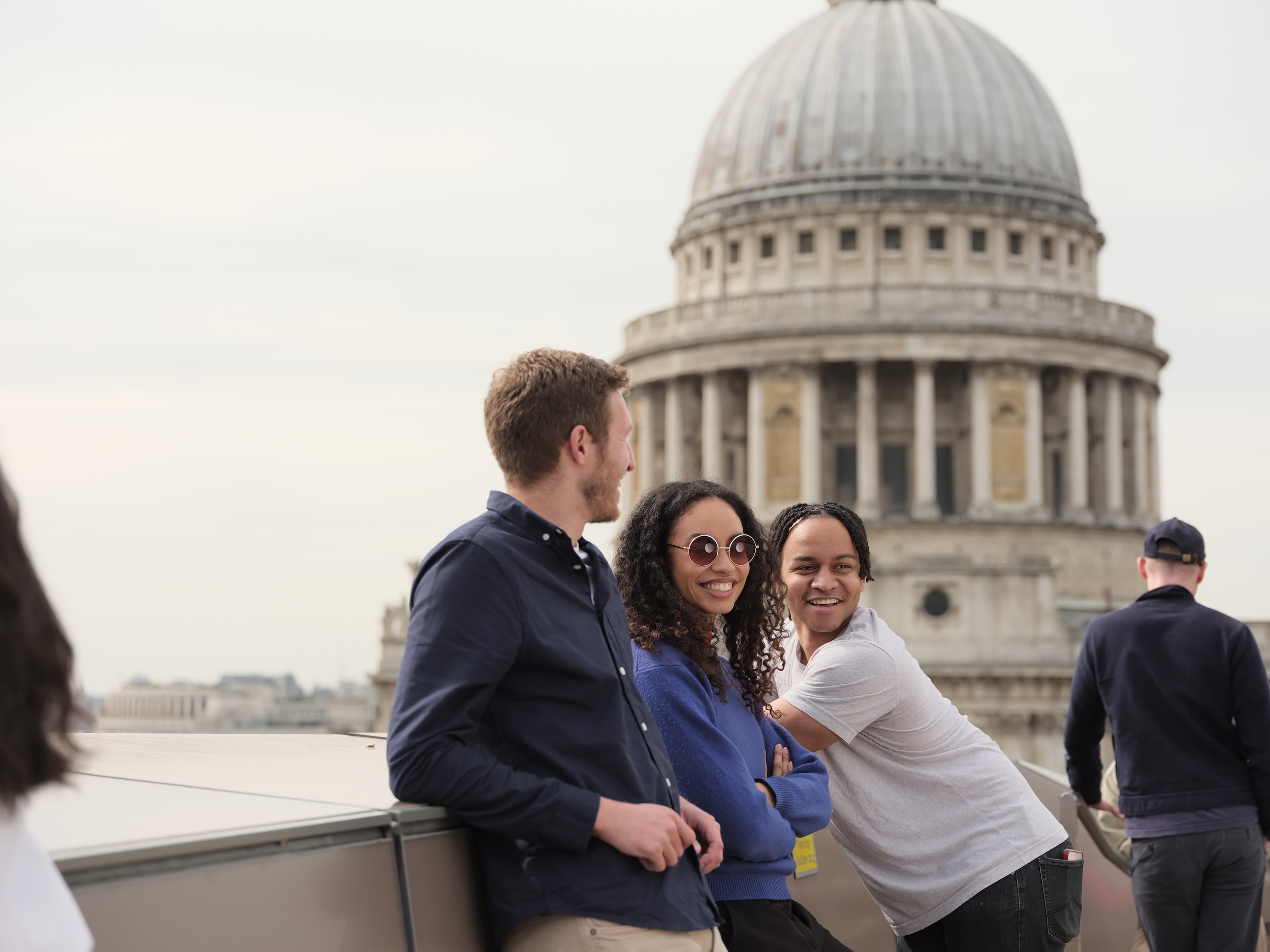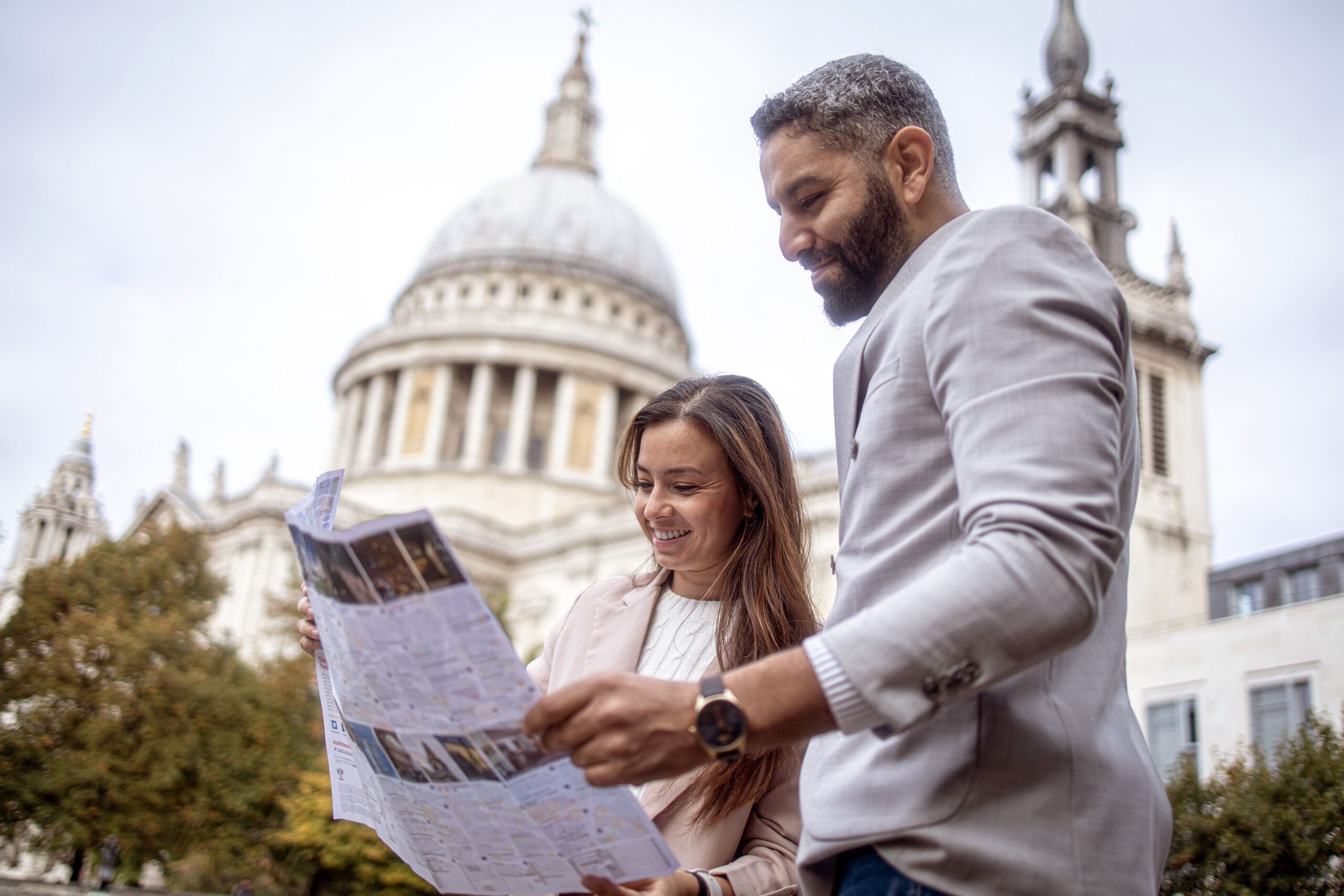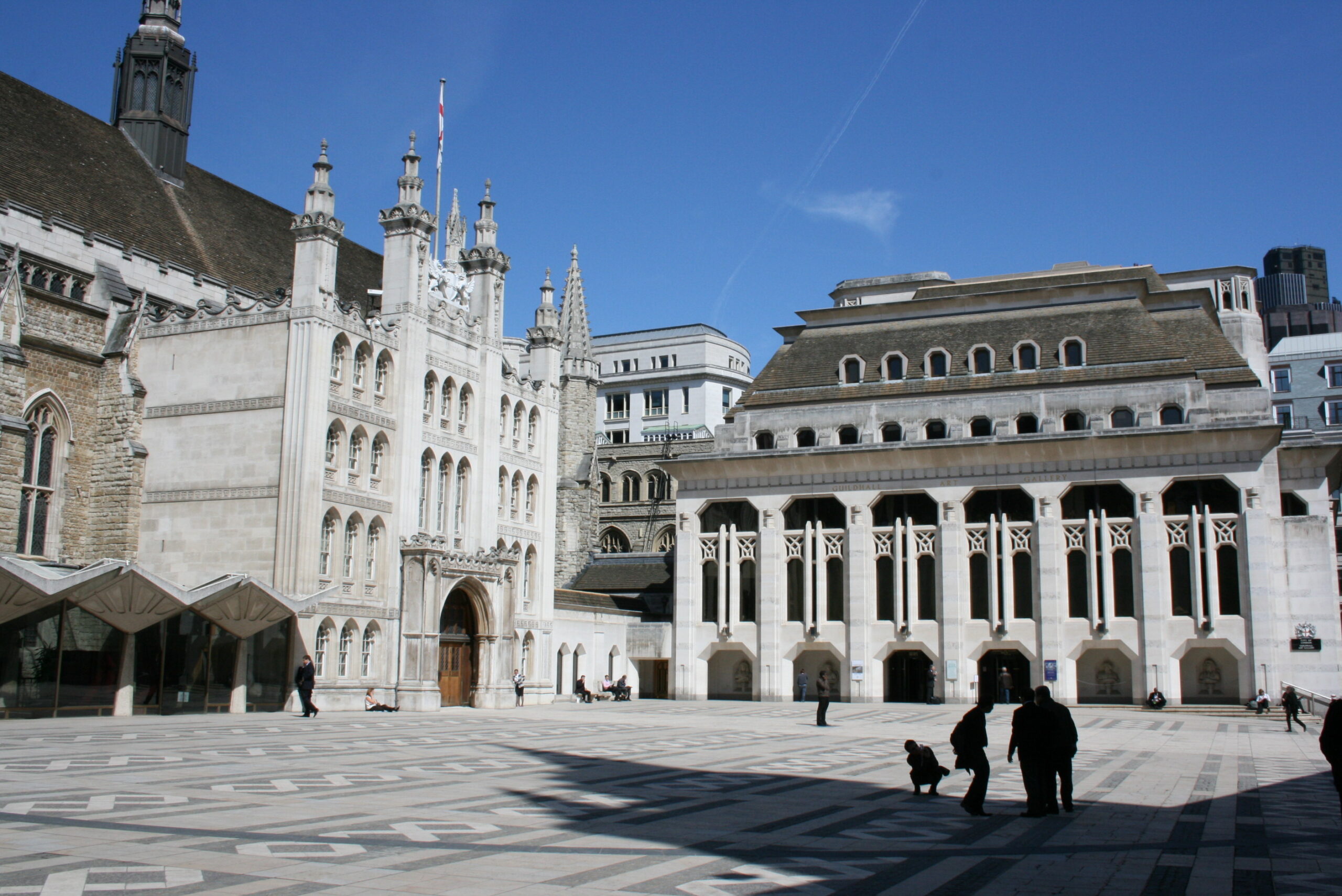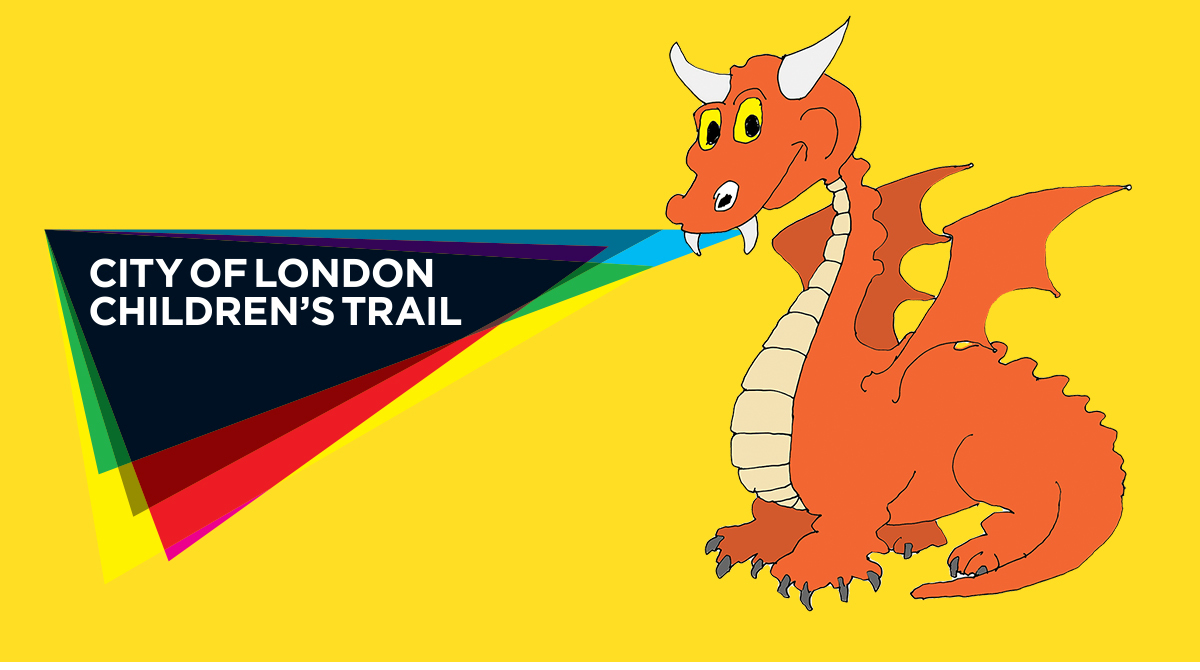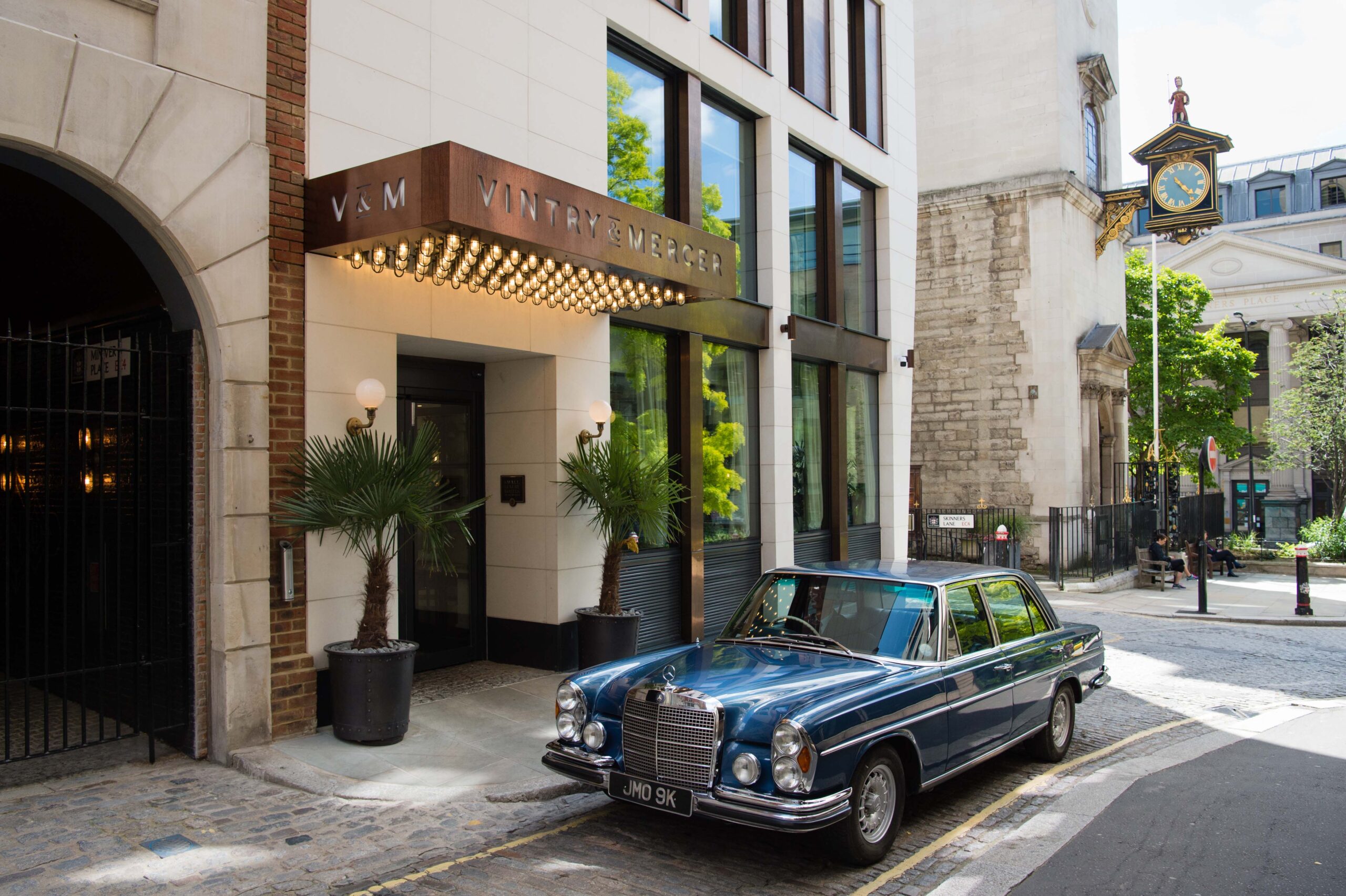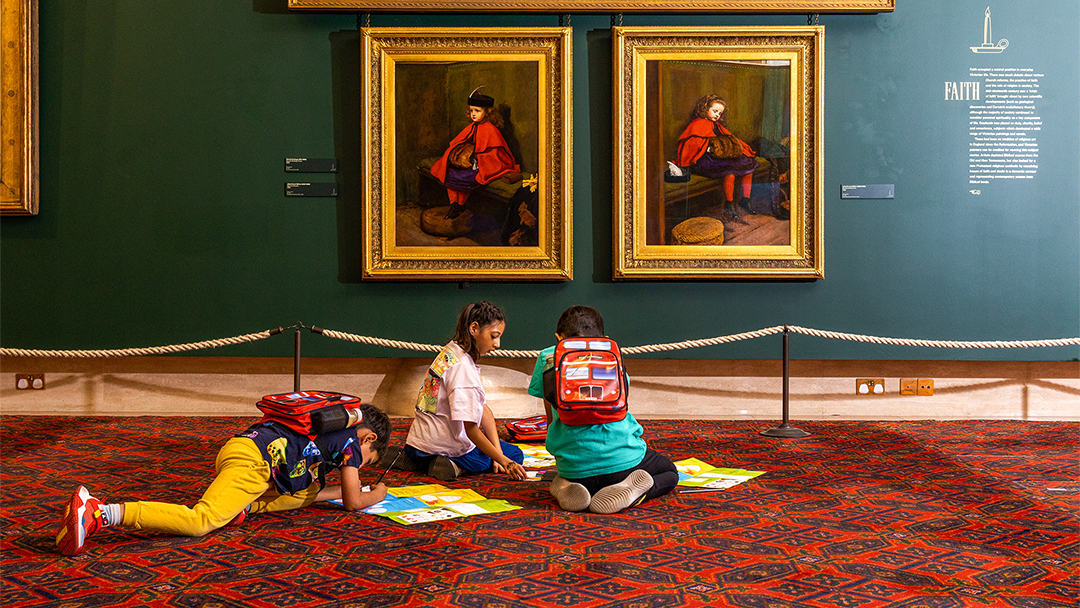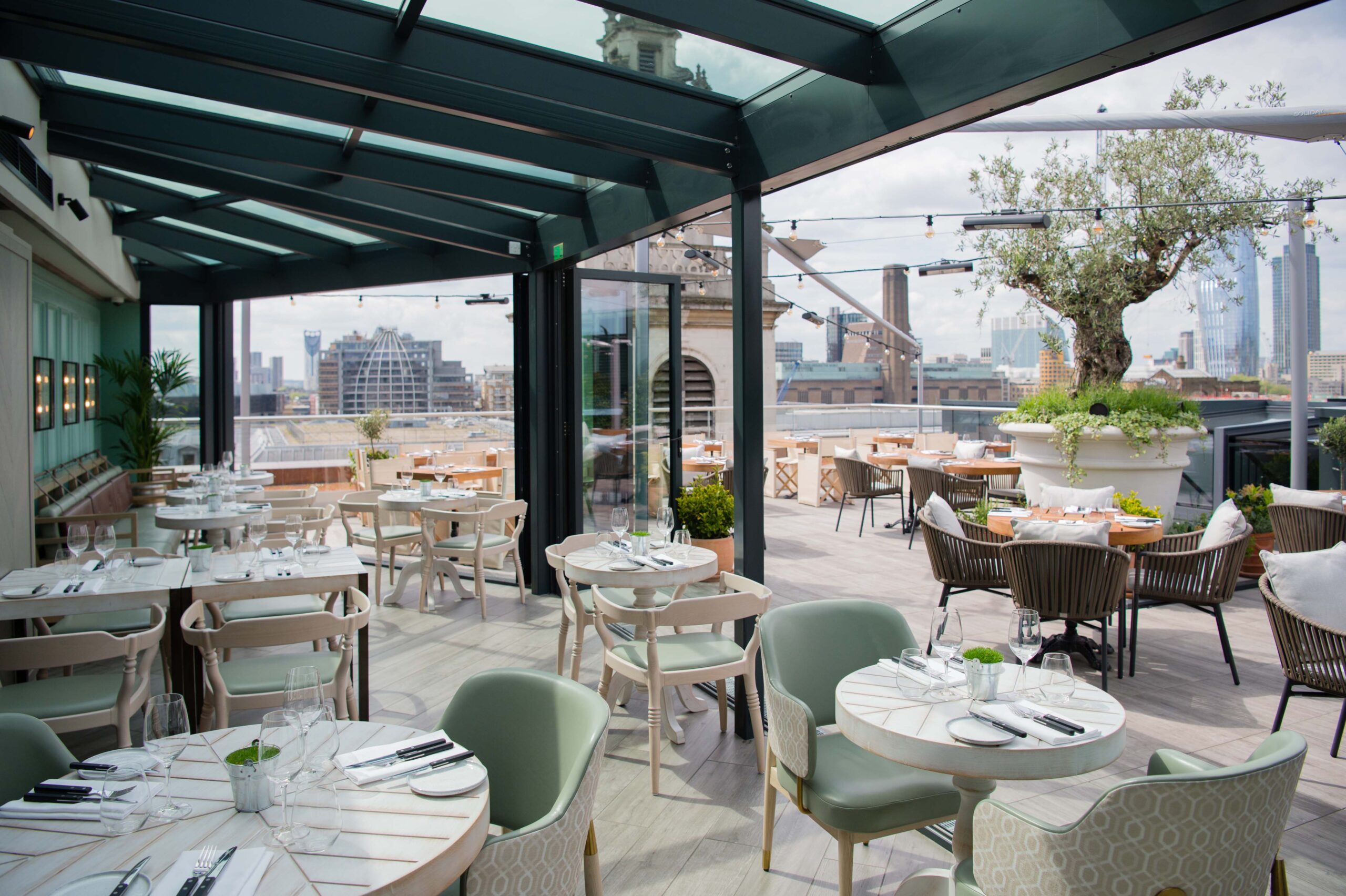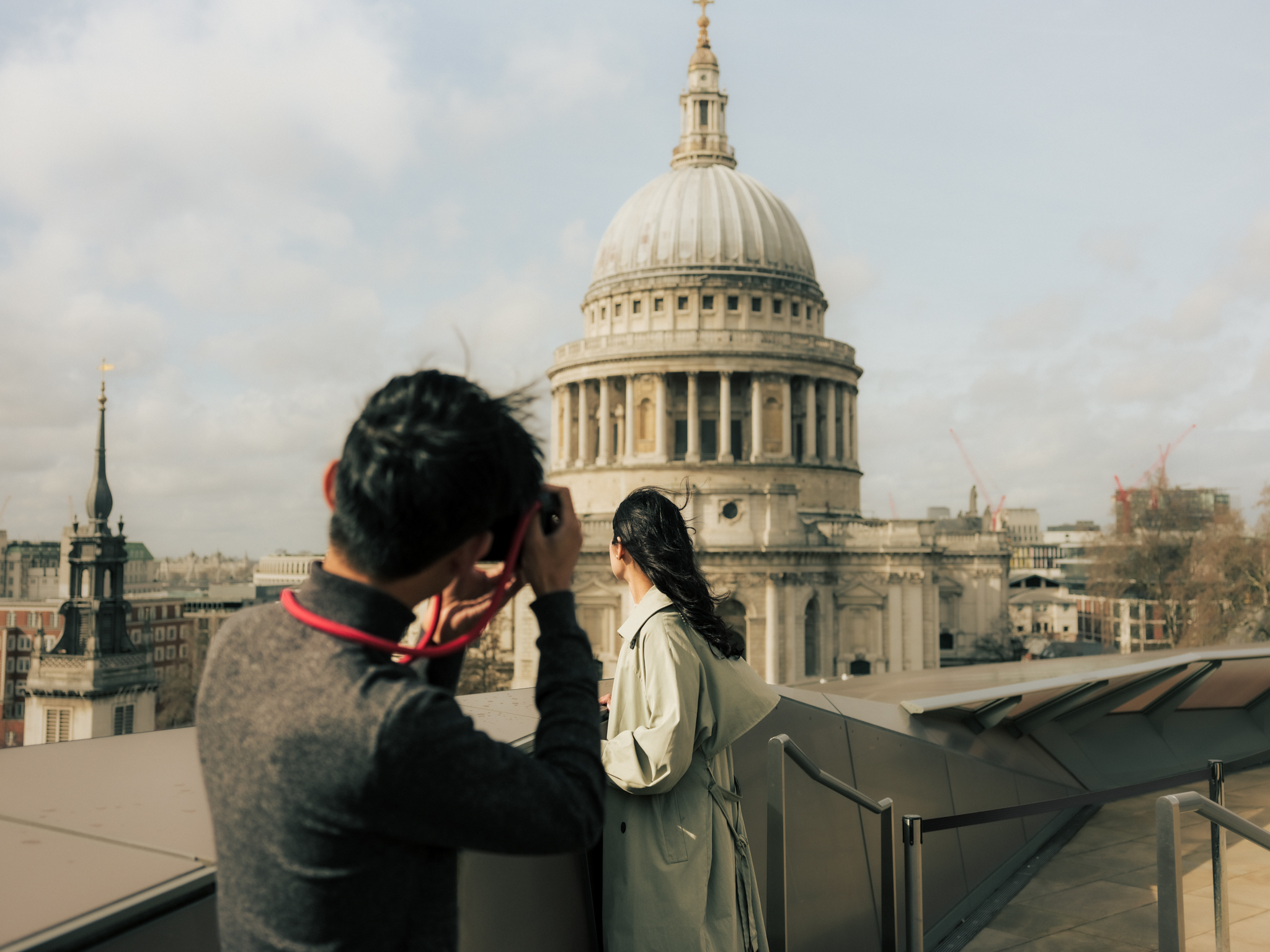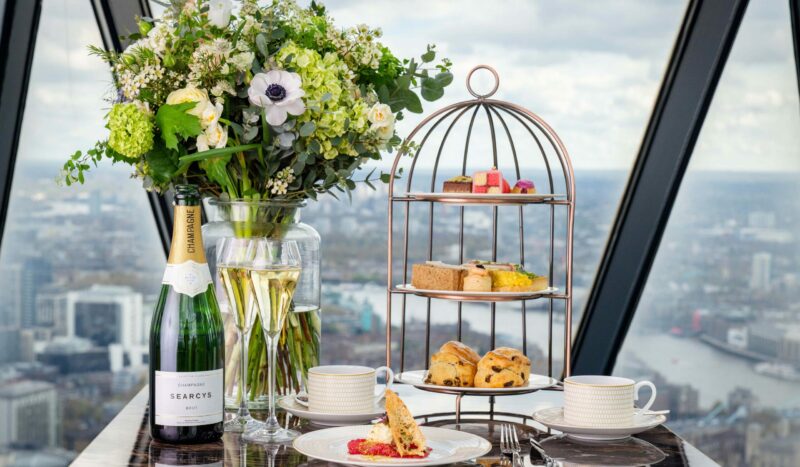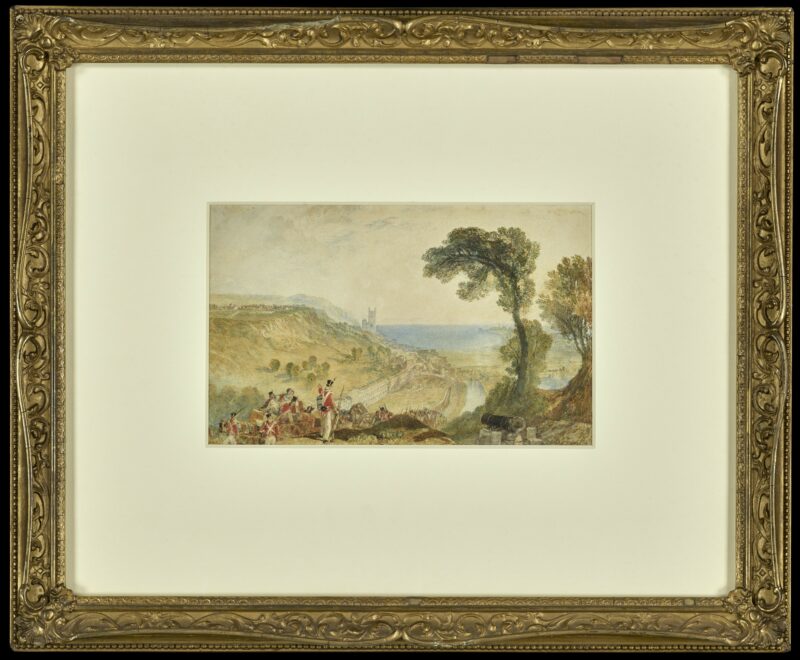
Follow the trail of destruction left by the most famous fire in history.
Background
In the early hours of Sunday 2 September 1666, a small fire started at Thomas Farriner’s bakery in Pudding Lane. The fire quickly spread towards the warehouses on the Thames before a strong wind spread the flames along the riverfront and further into the City.
The fire raged for five days and nights destroying 13,200 houses, 87 churches, three City gates and 52 livery halls. All in all, four-fifths of the City was in ruins. From the first sparks to the last ashes, this trail brings together the story of the most famous fire in history.
Note: From start to finish, this walking trail will take about two hours at an average walking pace. As you follow the trail you will notice many blue plaques dotted around, some of which are dedicated to buildings lost in the fire.
Where to start
Start at the City Information Centre, walk south towards the Millennium Bridge, then turn left onto the north bank of the River Thames. Follow the riverside Thames Path all the way to London Bridge.
1. Thames Path
In 1666, the City was the centre of commerce for England. As such, the Thames would have been bustling with boats and trade. Along its banks, large warehouses were packed to the rafters with paper, sugar, spices, cloth, rope, oil, alcohol, hay, timber and black powder – all very combustible commodities.
When the fire broke, the river became chaotic; merchants threw their goods into the Thames to save them from the flames and the warehouses blazed.
As you walk along the Thames Path, look out for the Great Fire of London on the beautiful Queenhithe Mosaic near the Westin City Hotel. Look out for old illustrations of the City before and after the Great Fire, as you walk through Fruiterers Passage near Southwark Bridge. Continue to follow the Thames Path.

Credit City of London Corporation
2. London Bridge
London Bridge was the only bridge across the River Thames until 1729. In 1666, it was crowded with houses, meaning it was too narrow to be a good escape route from the fire. There is a model in St Magnus the Martyr, our next stop, where you can see how congested the bridge used to be. Luckily, the wind direction and a fire break in the bridge meant that the fire did not spread along it to Southwark. London Bridge was re-built in 1824 and again in 1973.
After walking underneath London Bridge on the Thames Path, take the first left at the stone benches, where you will see St Magnus the Martyr.

®C.Totman
3. St Magnus the Martyr on Lower Thames Street
Due to its location, next to the River Thames and near a major crossroads into the City, this church was a key storage area for firefighting equipment. However, the church was close to where the fire started and was the second to burn on the first night of the blaze. The church you see today – along with most other City churches – were rebuilt by Sir Christopher Wren. Outside you’ll see stones from the original London Bridge and a piece of the Roman pier; inside there’s the four metre model of the old London Bridge.
Cross Lower Thames Street and turn right. Turn left up Pudding Lane.
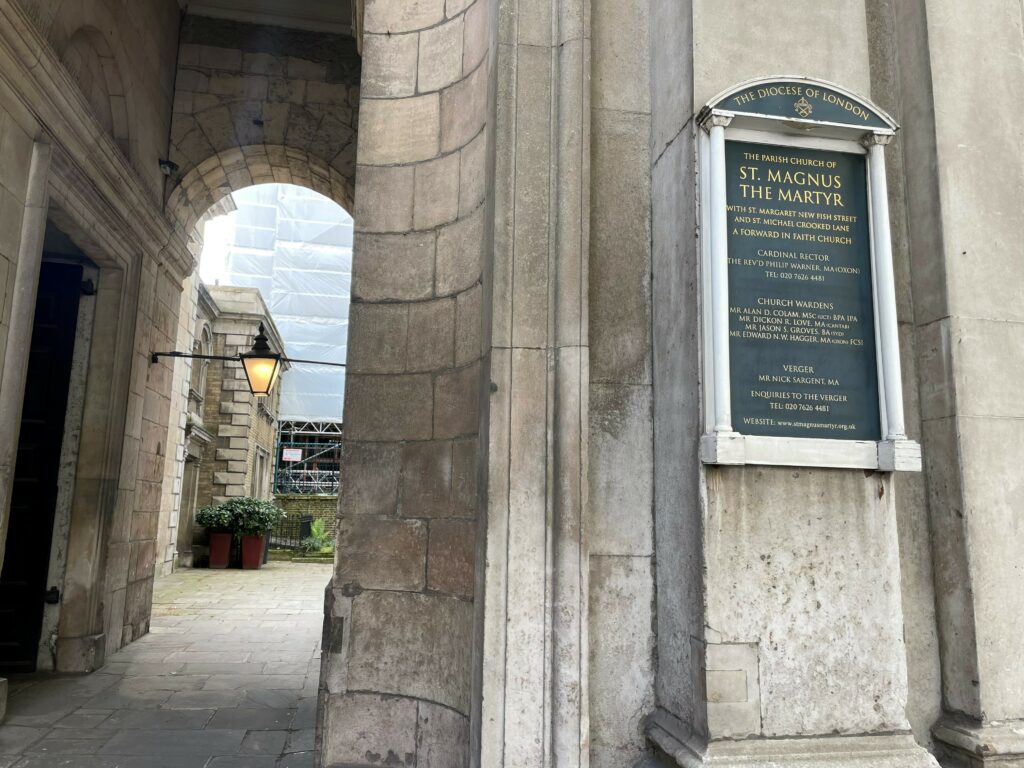
4. Thomas Farriner’s bakery in Pudding Lane
A plaque marks the spot where the Great Fire of London started on Pudding Lane at about 1am on 2 September 1666. Experts believe Thomas Farriner forgot to properly put out the fire in the oven of his bakery on Saturday night, leaving sparks to set light to spare fuel and flour. Thomas Farriner avoided persecution after a Frenchman, Robert Hubert, confessed to starting the fire, even though he wasn’t in London when it began. Thomas Farriner continued to bake.
Look left and walk up to the Monument.

5. Monument to the Great Fire of London
Built to commemorate the Great Fire, the Monument stands at 202ft high and exactly 202ft from where the fire started in Pudding Lane. It was designed by Sir Christopher Wren and Dr Robert Hooke, and built between 1671 and 1677 on the site of St Margaret’s, the first church to burn down in the blaze. Look up and you will see a flaming gilded urn, which symbolises the fire itself. Climb the 311 steps inside for panoramic views of London and a certificate of achievement.
Walk up Fish Street Hill, cross the junction and continue up Gracechurch Street to Leadenhall Market on the right.

6. Leadenhall Market
The Great Fire didn’t spread any further northeast of Leadenhall Market due to the market’s stone construction. The current building was designed in 1881 by the City’s architect Sir Horace Jones – who also designed Tower Bridge – but there has been a market at this site since the 14th century.
Return to Gracechurch Street, turn left, cross the road and enter Bell Inn Yard. At the end of the archway, turn right into St Michael’s Alley.

7. City Alleyways
The City has a medieval street plan, a crowded warren of winding, cobbled alleyways. In 1666, most City streets were as narrow as these alleyways. During the fire, they would have been full of people and carts, making it extremely hard for firefighters to get through. On the afternoon of the second day of the fire, carts were banned from entering the City because of the chaos
Walk along St Michael’s Alley, turn right at the junction and left onto Cornhill. Cross the road and you approach the Royal Exchange on your right.

8. Royal Exchange
In 1565 the Royal Exchange was built by Sir Thomas Gresham, a merchant and financier, as a trading floor. The central courtyard was used to trade teas, herbs and spices. It was destroyed in the fire on the Monday at 2pm along with Cornhill and later Lombard Street, home to many of the City’s bankers. This is the third Exchange building on this site and is now home to luxury shops and restaurants.
Standing on the pedestrianised area in front of the Royal Exchange at Bank junction you can see the Mansion House.
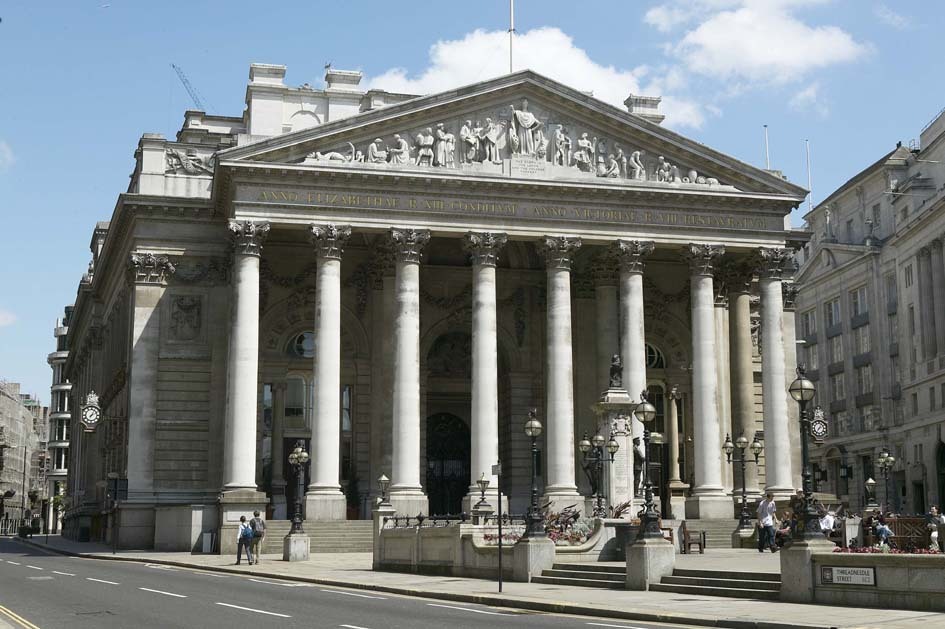
9. Mansion House
Mansion House is home to the Lord Mayor of the City of London. The Lord Mayor in 1666, Sir Thomas Bloodworth, became a scapegoat for the Great Fire because of his indecisive nature. A common firefighting method at the time involved pulling down buildings to stop fire from spreading. The Lord Mayor was woken in the early hours of the first day to grant permission to do this, but after assessing the situation decided it was not worth it. According to Samuel Pepys’ record of the events, he said that “a woman might piss it out”. Later the King ordered the demolition of houses, which could only be achieved with gunpowder because the fire was advancing faster than the houses could be demolished.
Walk up Threadneedle Street, cross the road and turn left onto Bartholomew Lane. Turn left onto Lothbury and continue along Gresham Street until you reach Guildhall on the right.

10. Guildhall
Built between 1411 and 1430, Guildhall is home to the City of London Corporation and has been the centre of City government since the Middle Ages. On the third day of the Great Fire, the flames reached Guildhall but most of the building survived as it was one of the few stone-built buildings in London.
Guildhall is now the only secular stone building dating from before 1666 still standing in the City. You can have a look round Guildhall’s Great Hall if it is not being used for events and visit the Guildhall Art Gallery to see portraits of the Fire Judges (if currently displayed); men who had been appointed to assess compensation claims after the Great Fire.
Leave Guildhall Yard past the church and turn right on Aldermanbury until you see Guildhall Library on the right.
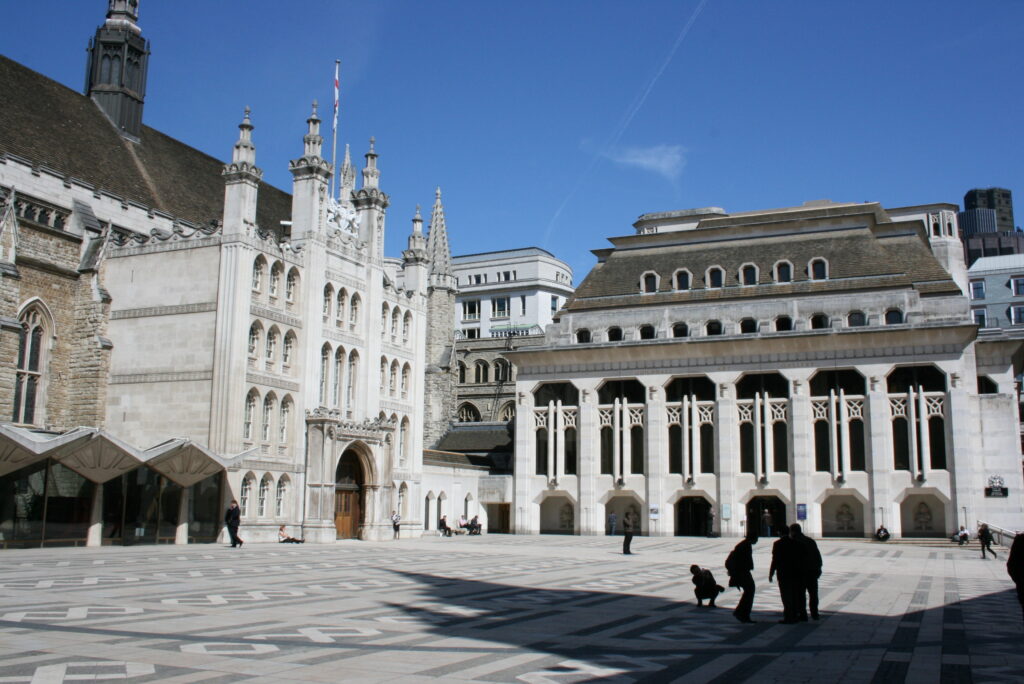
11. Guildhall Library
The Guildhall Library is one of the City’s major research libraries and has unrivalled resources on the history of the Great Fire, including first person narratives of those who lived through the conflagration, records of the buildings destroyed and legendary plots and counter plots. You can also discover the incredible stories of the rebuilding of the City, Christopher Wren’s revolutionary building designs and some of the fantastical plans that never got off the drawing board.
Continue up Aldermanbury to the Insurance Hall.

Credit City of London Corporation.
12. The Insurance Hall
Just round the corner from Guildhall is the Insurance Hall, former home to the Worshipful Company of Insurers and the Worshipful Company of Firefighters. The Great Fire of London destroyed 80% of the City of London including 13,200 houses and 87 out of 109 churches, leaving 100,000 people homeless. It took about 50 years to rebuild the City and as new buildings began to rise, not surprisingly, so did the world’s first insurance companies.
Walk back along Aldermanbury to Gresham Street. Cross the road and walk down Milk Street to Cheapside. Turn left, cross the road and you will see St Mary-le-Bow.
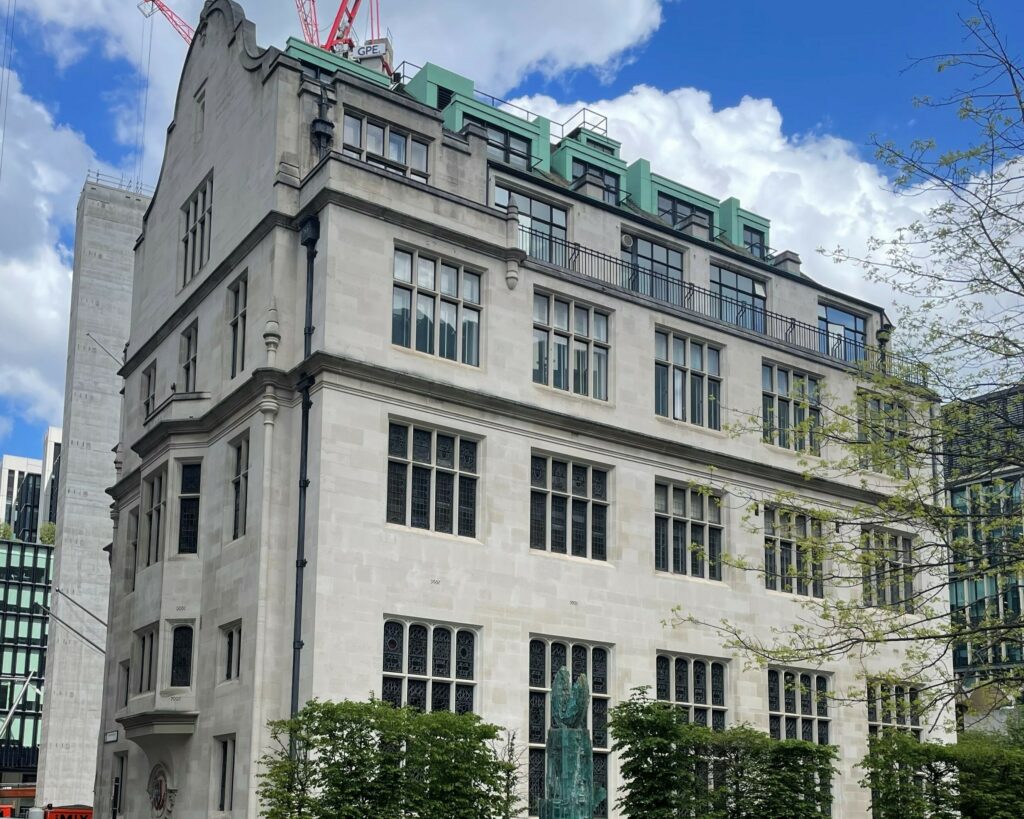
13. St Mary-le-Bow on Cheapside
Destroyed in the fire, this church was one of many rebuilt by Sir Christopher Wren in 1671-1673 and is perhaps his most famous on account of its bells – if you’re born within earshot of the bells you’re said to be a Cockney. The 11th-century crypt still survives, where you can grab a spot of lunch. Cheapside was, and still is, a busy shopping street once lined with market stalls and jewellery workshops.
Walk to the Western end of Cheapside, cross the road and turn left. Walk through St Paul’s Churchyard Gardens to take you to the front of St Paul’s Cathedral.
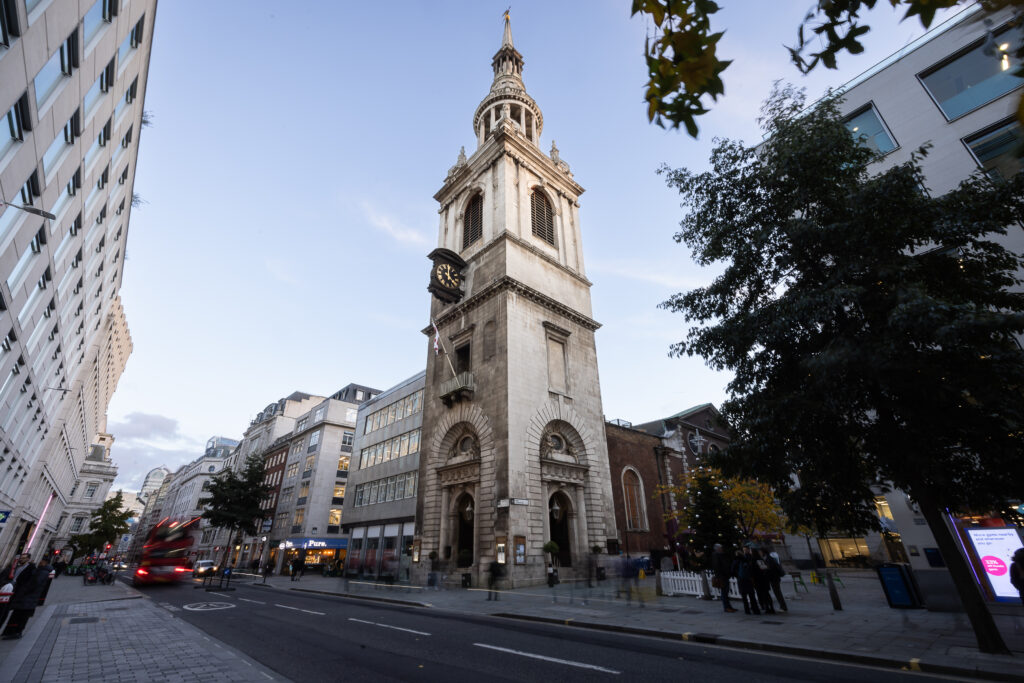
14. St Paul’s Cathedral
During the Great Fire, St Paul’s Cathedral was thought to be a safe refuge, with its thick stone walls and empty surrounding churchyard. Therefore it had been filled with rescued goods from all over the City including hundreds of books from the bookshops in nearby Paternoster Row.
However, on Tuesday at 8pm, three days after the fire had started, the wooden scaffolding surrounding St Paul’s caught fire and ignited the timbered roof. Within half an hour, the lead roof was melting and the cathedral was completely destroyed a few hours later, taking with it thousands of treasures. When today’s building, designed by Sir Christopher Wren, was completed in 1710 it became a symbol of hope, resilience and strength for the City.
Look out for the carved phoenix rising from flames on the south side of the Cathedral with the word “Resurgam” underneath. It is Latin for “I shall rise again”. If you go inside, be sure to have a go at the Whispering Gallery and check out the stunning City views from the Golden Gallery.
Walk up through Paternoster Square and turn left onto Newgate Street. Cross the road and turn right onto Giltspur Street. Continue until you reach the corner of Cock Lane.
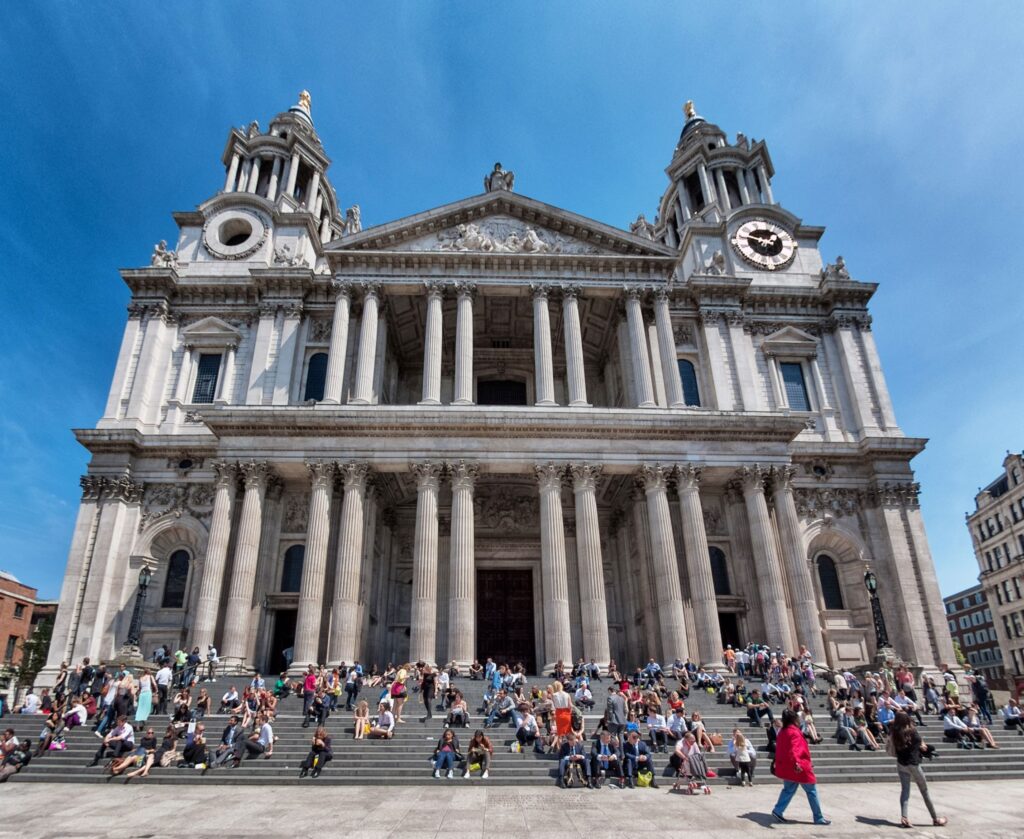
15. Golden Boy at Pie Corner
This spot used to be called Pie Corner and was where the Great Fire stopped. Having started in Pudding Lane and ending here, some thought the fire was a punishment from God because City folk ate too much (the sin of gluttony) and so this statue was erected as a warning to future generations. In actuality, the name comes from the Magpie Tavern that used to stand here, not the pies we eat; and Pudding Lane was named for the ‘puddings’ that dropped from offal carts going from the meat market on Eastcheap to the Thames.
End of Walk

The Great Fire of London Walking Trail Map
Note:
This publication has been produced by the City of London Corporation, a uniquely diverse organisation with three main aims: to support and promote the City as the world leader in international finance and business services; to provide local services and policing for the Square Mile; and to provide valued services to London and the nation.
As a custodian of London’s heritage, the City provides stewardship for a huge collection of books, archives, pictures, photographs, prints and other materials, which constitute a major part of the recorded memory of London, including the Great Fire of 1666. www.cityoflondon.gov.uk.
We have produced this publication in association with the Museum of London and Worshipful Company of Firefighters, whose assistance is gratefully acknowledged.





